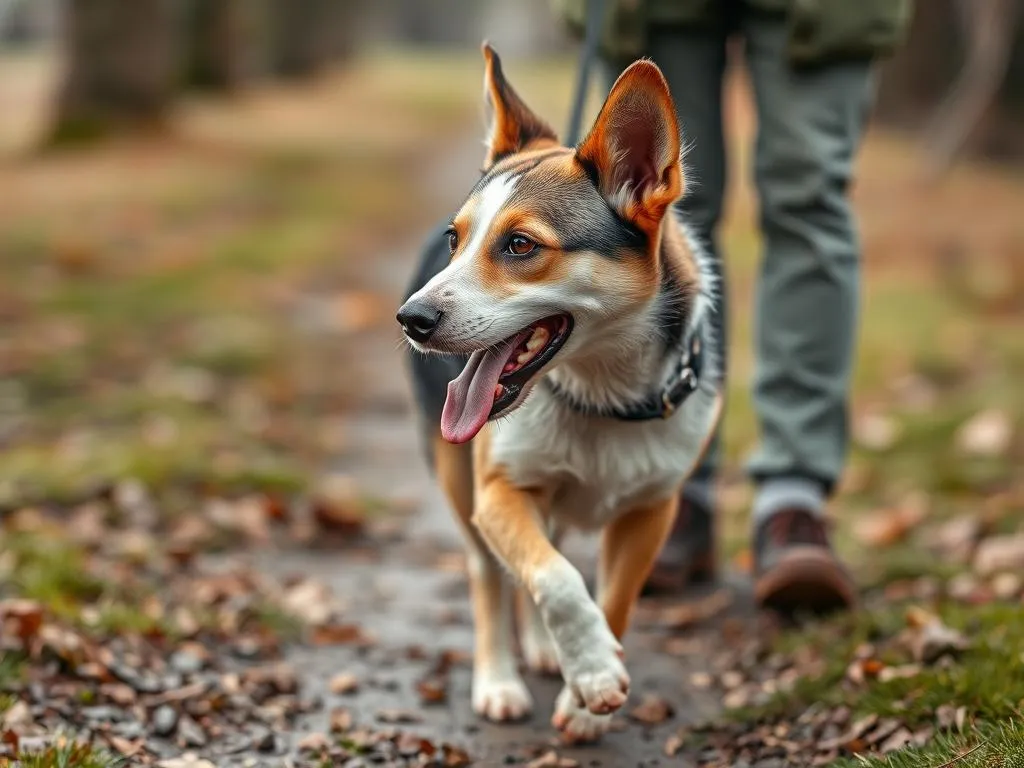
Introduction
Walking your dog is more than just a chore; it’s an essential part of maintaining a happy and healthy lifestyle for both you and your furry friend. Walking a dog not only provides a vital opportunity for physical exercise but also allows for mental stimulation and socialization. Regular walks can significantly improve your dog’s behavior, health, and overall well-being, while also benefiting you as a dog owner. In this comprehensive guide, we will explore the various aspects of how to effectively walk your dog, including understanding your dog’s needs, preparing for walks, best practices, socialization, health benefits, and overcoming common challenges.
Understanding Your Dog’s Needs
Different Breeds, Different Needs
When considering how to walk a dog, it’s crucial to recognize that different breeds have varying exercise requirements. High-energy breeds, such as Border Collies and Retrievers, need more vigorous walks compared to lower-energy breeds like Bulldogs and Basset Hounds. Understanding your dog’s breed can help you tailor their walking routine to effectively meet their energy levels and keep them physically stimulated.
Age and Health Considerations
Age also plays a significant role in determining your dog’s walking needs. Puppies generally have lots of energy but may not be able to handle long walks until they are fully grown. Adult dogs usually thrive on daily exercise, while senior dogs may require shorter, more leisurely strolls due to decreased stamina and potential health issues. Always consult with your veterinarian to determine the appropriate walking routine based on your dog’s age and health status.
Behavioral Traits
Your dog’s personality can greatly influence their walking habits. An anxious dog may feel overwhelmed in busy environments, while an aggressive dog might react negatively to other animals or people during walks. Understanding these traits is essential for creating a positive walking experience. Socialization during walks can help mitigate these issues and allow your dog to feel more comfortable in various environments.
Preparing for the Walk
Essential Gear for Walking Your Dog
Having the right gear is fundamental to a successful walk. The type of leash and collar you choose can significantly impact your control and your dog’s comfort. Here are some options to consider:
- Standard Leash: A 6-foot leash is a great all-around choice for most dogs.
- Harness: Ideal for dogs that tend to pull, as it distributes pressure more evenly.
- Retractable Leash: Offers more freedom for your dog but requires careful handling to avoid tangles.
Proper identification is also crucial. Ensure your dog has a collar with an ID tag and consider microchipping for added security.
Safety Precautions
Safety is paramount when walking your dog. Always be aware of your surroundings and keep a watchful eye on your dog, especially in busy areas. Avoid walking in high-traffic zones, and steer clear of potential hazards like aggressive dogs or wildlife. Additionally, ensure your dog is up to date on vaccinations to prevent the spread of diseases.
Assessing Weather Conditions
Weather can significantly influence your walking routine. On hot days, aim for early morning or late evening walks to avoid overheating. In cold weather, be mindful of your dog’s tolerance to low temperatures, especially for breeds with shorter coats. Rainy days may require extra precautions, such as using a doggy raincoat or towel for drying off after the walk.
Best Practices for Walking Your Dog
Establishing a Routine
Creating a consistent walking schedule is beneficial for both you and your dog. Regular walks help establish a routine, which can lead to better behavior and less anxiety in your pet. Try to integrate walks into your daily life—whether it’s a morning ritual or an evening wind-down after work—consistency is key.
Training Your Dog to Walk Properly
Training is essential for a successful walking experience. Start with basic leash training, teaching your dog to walk calmly beside you. Use positive reinforcement techniques, rewarding your dog for good behavior. If your dog pulls or lunges, stop walking until they calm down. This teaches them that pulling will not get them where they want to go.
Engaging Your Dog During Walks
Keep walks interesting by varying your routes and incorporating playtime. Allow your dog to sniff around and explore, as this is a natural behavior that provides mental stimulation. Consider bringing along toys for play breaks or practicing commands like sit and stay during your walk to reinforce training.
Socialization and Interaction
Meeting Other Dogs and People
Socialization is a critical aspect of your dog’s development. When introducing your dog to others, approach slowly and allow them to sniff each other before making contact. Keep your dog on a short leash during introductions to maintain control. If your dog shows signs of aggression or excessive excitement, redirect their attention to you and reward calm behavior.
Dog Parks and Community Spaces
Dog parks can be a fantastic opportunity for socialization, but they require supervision. Before entering, observe the other dogs and their behaviors. If your dog is shy or aggressive, it may be best to avoid these environments until they are more comfortable. Always clean up after your dog to ensure a pleasant experience for everyone.
Health Benefits of Walking
Physical Benefits for Dogs
Regular walks provide numerous physical benefits for dogs. They help maintain a healthy weight, promote muscle tone, and improve cardiovascular health. Additionally, walking stimulates your dog’s mind by exposing them to new sights, sounds, and smells, which can alleviate boredom and reduce destructive behaviors.
Benefits for Dog Owners
Walking your dog is not only beneficial for your pet but also enhances your own health. Engaging in regular physical activity can lead to improved cardiovascular health, weight management, and boosted mood due to the release of endorphins. The bond that develops during these walks strengthens your relationship with your dog, making it a rewarding experience for both of you.
Common Challenges and Solutions
Weather-Related Challenges
Adverse weather conditions can pose challenges when walking your dog. On particularly hot days, consider shorter walks or finding shaded areas. During winter months, invest in a warm coat for your dog if they are sensitive to cold. Indoor alternatives, such as playing fetch or using dog puzzle toys, can also keep your pet active when outdoor conditions are unfavorable.
Behavioral Challenges
Common behavioral challenges, such as barking or aggression during walks, may require additional training. If your dog frequently barks at passersby, try redirecting their attention with treats or toys. For more severe aggression issues, consider seeking professional help from a dog trainer or behaviorist who can provide tailored strategies for your dog’s needs.
Conclusion
In conclusion, understanding how to walk a dog involves recognizing your pet’s unique needs, preparing adequately, establishing best practices, and overcoming challenges. By incorporating these tips into your routine, you can enhance the walking experience for both you and your dog. Regular walks are not just a necessity; they are an opportunity for bonding, exercise, and exploration. Start implementing these strategies today, and enjoy the many benefits that come from walking your dog regularly.









